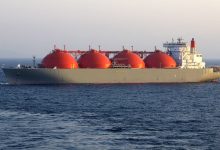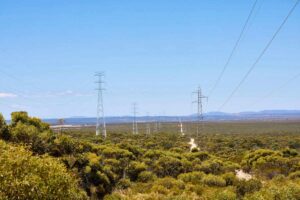Last week’s long-awaited interest rate cut offered further evidence that the cost of living will be critical in deciding Australia’s imminent general election.
But whoever prevails on polling day, they have a clear opportunity to reduce everyday costs for households and businesses – and it has nothing to do with the RBA.
Australia’s gas industry continues to sell the vast majority of Australia’s gas overseas – at the expense of domestic gas users. Indeed, liquefied natural gas (LNG) producers continue to export additional gas to cash in on lucrative international spot markets.
Meanwhile domestic gas users continue to struggle – a situation expected to worsen with a supply gap looming in the perennially tight east coast gas market. This means higher bills for households, and challenging conditions for gas-reliant industries.
But these challenges could easily be alleviated through new policy solutions – most notably by redirecting some of the huge volumes of gas bound for export back into the domestic market.
However, one thing that won’t help is to listen to calls for new gas production.
Back in January the Australian Competition and Consumer Commission (ACCC) became the latest organisation to warn that Australia’s eastern states are hurtling towards a gas supply gap. A report from the ACCC forecast that the east coast gas market is likely to see structural supply gaps emerging in some areas as early as 2027.
To address these risks, the ACCC called for new gas supply and for streamlined regulatory approvals to enable new production. This is a familiar statement from the ACCC, which has been calling for new gas production since 2017. The only problem is, this approach doesn’t work.
Despite these calls, the risk of supply gaps persists.
The ACCC’s own analysis confirms this, with its recent report showing that the likelihood and magnitude of supply gaps are higher than ever. This raises questions about the gas industry’s ability to invest in enough new supply to offset declining production from legacy gas basins, particularly in the south, and its willingness to supply the domestic market rather than export markets.
The development of Queensland LNG export sector has had a profound impact on the east coast gas market, leading to higher prices and falling domestic gas demand despite production actually increasing. More broadly, most of Australia’s gas goes to the LNG industry, which consumes about 80% of all gas produced in Australia.
East coast market tightness, along with surging international prices, has driven up domestic gas prices, fuelling inflation and leading to the closure of several industrial manufacturers.
In other words, the gas market on the east coast has directly contributed to the cost-of-living crisis. It has also, as noted in the ACCC’s report, contributed to “the hollowing out of manufacturing capability in Australia”.
It is now clear that increasing gas production will not solve the looming supply gap. Governments and energy agencies (including the ACCC) should consider other measures to address potential supply gaps and alleviate cost-of-living pressures.
Fortunately, there are several options available to governments.
Australian LNG exporters continue to export more gas than is required to meet their long-term contracts. Their aim is to take advantage of high international LNG prices via LNG spot sales (spot markets facilitate quick sales of uncontracted LNG cargoes). Remarkably, Queensland LNG producers are now withdrawing more gas from the domestic market (from other producers) than they supply.
This is gas that could readily be diverted into the domestic market to alleviate market tightness and ensure that Australian gas-reliant manufacturers can keep the lights on. The Australian LNG industry exports enough LNG spot volumes to address the risks of future supply gaps on the east coast (although importing LNG from Western Australia would require construction of an import terminal on the east coast).
Without additional supply from LNG exporters, we face the prospect of higher bills and more job losses in gas-reliant industries.
The other option available to governments is to help households and suitable industrial users electrify and implement efficiency upgrades. IEEFA previously found that additional measures to do so could alleviate the risks of supply gaps on the east coast. These measures would also help to lower household energy bills during the cost-of-living crisis and likely put downward pressure on inflation.
By taking action, governments can address the risks of gas supply gaps while pushing down bills (and likely inflation), and securing gas-reliant manufacturing jobs. The question is, who will make this case to Australian voters?
Josh Runciman is the lead analyst for Australian gas at the Institute for Energy Economics and Financial Analysis. The issues explored in this article are examined in greater depth in a new IEEFA briefing note, Australian gas users pay price as LNG exporters prioritise spot market windfalls.






